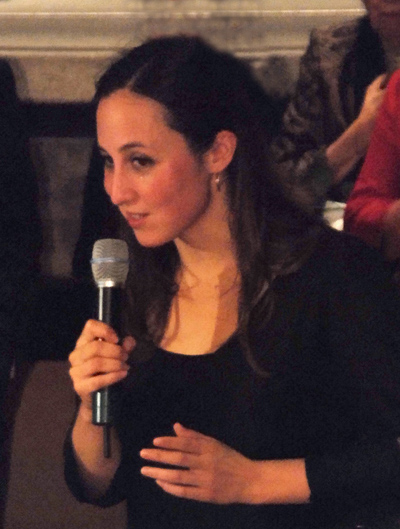Kicking the tires
The Berkeley Symphony Orchestra inaugurated their fall season Thursday, Oct. 15, at UC Berkeley’s Zellerbach Hall, and perhaps in deference to the gala dinner afterwards, many wore their finery, sprinkling the hall with gowns and tuxes.
A buzz of excitement surrounded the induction of conductor Joana Carneiro, who follows Maestro Kent Nagano. The Berkeley Symphony signaled their on-going commitment to contemporary composers and the choice of one whose vision is large enough to satisfy a progressive city and spark these top-flight musicians. It also marks the ascension of a woman to the helm, an event still rare enough to applaud.
Renowned local composer John Adams was on hand for his “Chairman Dances,” an orchestral suite excerpted from his opera, Nixon in China. Carneiro’s conducting was dynamic and full of abrupt gestures, perhaps contributing to the sharp focus of the musicians. Sixteenths were laid out like train tracks, a minimalist framework over which Adams smoothly embroidered with small gestures and slow dynamics.
In the opera, Madame Mao, a former star of the stage, gazes up at a portrait of the deceased Chairman, which then animates and he climbs down for a foxtrot. The even “footwork,” sharp turns, and muted trumpets extend a 50’s feel. They slow to marimba and piano, contoured by hiss of brush and sandpaper, and a final “tock” of woodblock.
The Oakland Symphony performed this in February 2008, and it was a dream fit. Where Carneiro gave the piece sparkle, conductor Michael Morgan gave it sizzle and even a little sleaze, dancing on the podium to snaky trumpets. His musicians tempered Adams’ exacting figures, stretching rhythm with a foxtrot’s lilt.
Gabriela Lena Frank, another local composer and rising star, followed with the West Coast premiere of Peregrinos (Pilgrims), stories of immigrants which she developed over a two-year residency with the Indianapolis Symphony. I heard Frank’s Songs of Cifar at Music@Menlo in August 2008, and Quijotadas performed by the Brentano String Quartet (March 12 2008 Piedmont Post). Each is emotionally compelling, but none more than “Fireflies,” the middle movement in Thursday’s program. Violinists slid their fingers for creepy shrieks, and rhythms un-balanced for a nightmare quality.
The Testimonio that inspired this was related to Frank by an immigrant who was packed in the trunk of a car with two other women as they were driven north. They stopped at a cemetery filled with fireflies, freighting a bucolic image with terror. Sharply bowed descending scales and passages of flute and piccolo gave an edgy shimmer to the movement. In the next movement, “Sarita Colonia,” the Peruvian patron saint of immigrants, Frank heralds prayer with belling notes of celesta, then the soft spice of oboe and marimba were tautened with kettle drum rumbles. Emma Moon swept through difficult flute runs, and Stacey Pelinka turbocharged them on piccolo.
The final movement returned us to the “Dream Tree” of the opening, where lyrical passages blended oriental pentatonic with Peruvian folk melody. Modeled after a community laundry rack ablaze with colored strips of tape, each written with an individual’s dreams and hopes, this movement alternates prayerful violin, performed by concertmaster Franklyn D’Antonio, with the snap and flutter of viola pizzicato. In the final reprise the violin is darkened with double stops.
Checking under the hood
The last half of the concert, Béla Bartók’s Concerto for Orchestra, showcased the talented symphony members. It is very demanding and requires virtuosity in every section. The musicians accepted this tribute with aplomb, playing with sweep and subtlety.
When Bartok took this commission he was ill and starving and weighed only 78 pounds. A near-miraculous recovery and feverish work followed, and he completed the score in 7 weeks. His health never fully recovered, and he died two years later. The tortured and elegant elegy movement may have been his own requiem.
The concerto began with mysterious bass fragments, then slowly builds to thunder, slows to elegy, drops into caricature, and finishes with triumphant horns. Along the way every instrument is lauded, and the hard-working members of the Berkeley Symphony took their turn in the spotlight.
Carneiro took the BSO for a spin around the block and then floored it on the straightaway (that would be the Bartók). I’m definitely in for their next race.
—Adam Broner
Originally published in the Piedmont Post.
Photo by Paul Hounshell: Joana Carneiro at post concert toast
